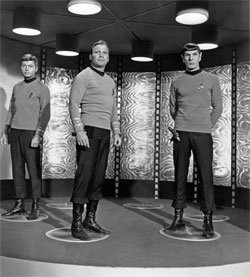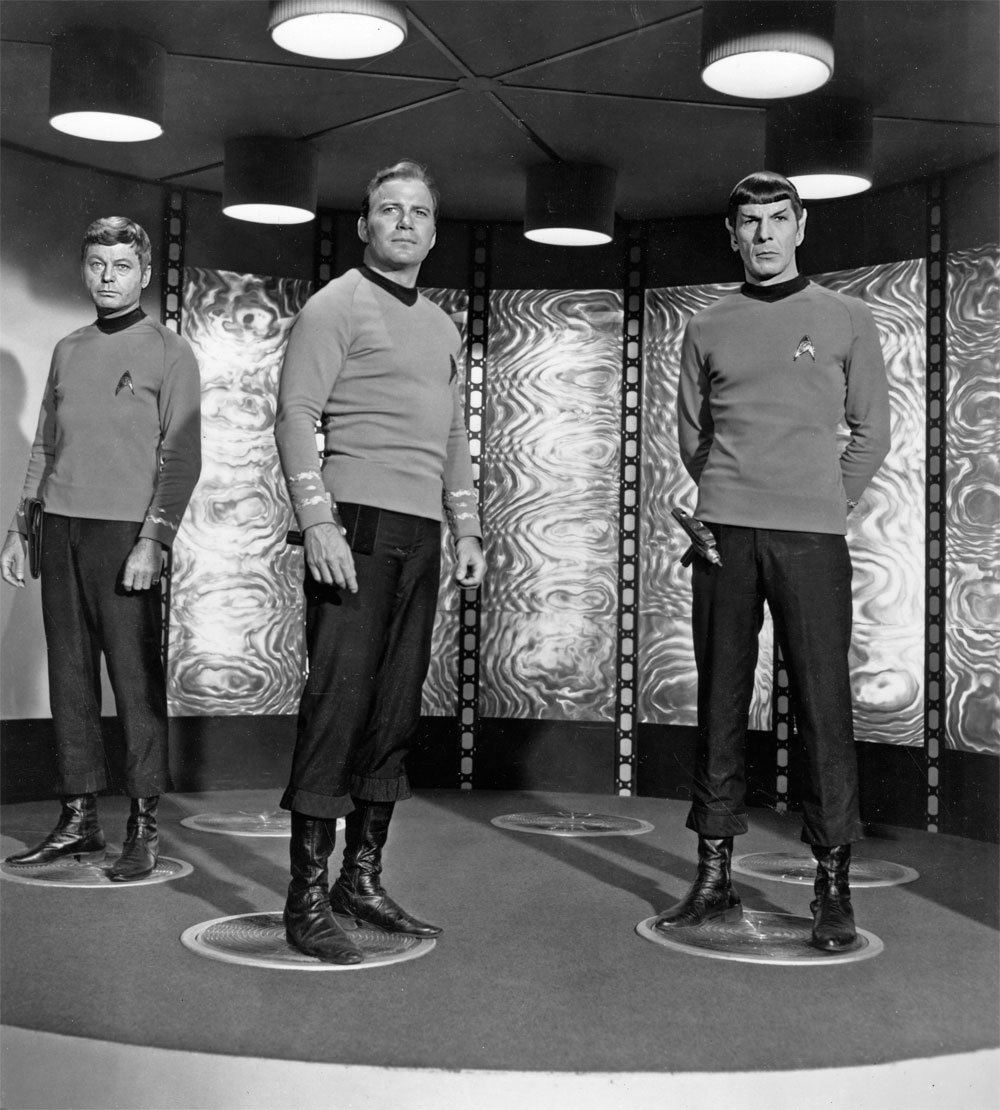Landmarks: Teleportation is not Science Fiction
Focus Landmarks feature important papers from the archives of the Physical Review.
Any attempt to measure an unknown quantum state yields incomplete information, according to the Heisenberg uncertainty principle, so you can’t measure the state and then reproduce it precisely. But in 1993, researchers hit on a way to exactly copy an unknown quantum state from one particle to another, as long as it remains unknown. This ability to “teleport” quantum states, reported in Physical Review Letters, may prove crucial to quantum computing and other information-processing technologies.
Teleportation came about serendipitously, says Charles Bennett of IBM in Yorktown Heights, New York, one of six coauthors who devised the process. At a 1992 conference, William Wootters of Williams College in Williamstown, Massachusetts, described a curious result found by him and Asher Peres of the Technion–Israel Institute of Technology. They considered two identical but unknown quantum states, such as a pair of photons with unknown polarization. Peres and Wootters found that observers can learn more by performing a single measurement on the photon pair than by carrying out any number of separate measurements on the individual particles. The pair measurement is one that’s made after the photons have been forced to interact in some way. They proposed a procedure that would allow the observers to guess the photons’ original polarization with maximum confidence [1].
Discussing this finding at the conference and by e-mail afterward, the six researchers added a new twist. They devised a way for two observers, who acquired the names Alice and Bob, to each take one of the identical particles to a different location and still perform the optimized measurement on the pair. The method relies on giving each of the observers an additional particle. These new particles would be prepared in a quantum mechanically “entangled” state, so that a measurement by Alice on her new particle would influence the outcome of a measurement by Bob on his new particle, despite the physical separation [see Focus Landmark story from 2005].
The procedure is that Alice makes a measurement on her pair of particles–the entangled particle and the photon with unknown polarization. Her measurement influences the state of Bob’s entangled particle, and she also sends Bob the results of her measurement by classical means. Bob then uses Alice’s results to construct a measurement on his pair, the entangled particle and his copy of the original unknown photon state. He ends up with the same information that he could have obtained directly from the original pair if they were together.
It took further thought, Bennett says, for the collaborators to understand why the protocol works and to realize that they had discovered something quite unexpected. The procedure turns Bob’s entangled particle into an exact replica of Alice’s unknown state. So Bob is back to the original situation of having the two identical particles at the same location. Sending an exact copy of a quantum state from one place to another was far more interesting to the researchers than the original problem. Peres wanted to call the process “telepheresis,” a word with purely Greek roots, but Bennett persuaded him that the Greek-Latin hybrid “teleportation” had already gained credence thanks to science fiction writers.
Teleportation requires quantum information delivered through the entangled pair as well as classical information, which Alice can transmit no faster than the speed of light. Moreover, Alice’s measurements destroy her original unknown state, so it isn’t “photocopied” without effect on the original particle, which would be forbidden by quantum mechanics.
The first demonstrations of teleportation came a few years later. Beyond its appeal as an example of quantum weirdness, teleportation provides a way to transfer quantum information among physical objects, says Christopher Monroe of the University of Maryland in College Park. If a practical quantum computer is ever built, he says, it will have to make use of different kinds of quantum bits, perhaps atoms for storage and photons for transmission. So teleportation would be a natural way to connect these components, he says.
–David Lindley
David Lindley is a freelance science writer, now retired. His most recent book is The Dream Universe: How Fundamental Physics Lost Its Way (Penguin Random House, 2020).
References
- A. Peres and W. K. Wootters, “Optimal Detection of Quantum Information,” Phys. Rev. Lett., 66, 1119 (1990)
More Information
Related information: more on quantum teleportation (with additional links)





